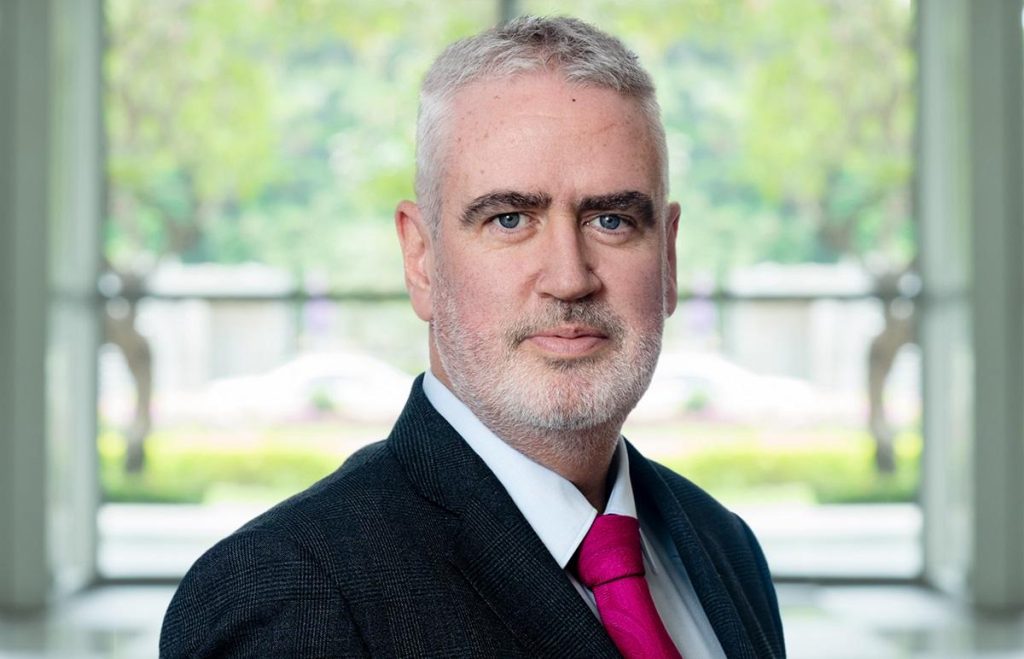By: Mike Hayes, Climate Changes and Decarbonization Leader, Global Head of Renewable Energy, KPMG International
As delegates gather in Belém for COP30, the global spotlight is firmly on the urgent need for action and implementation in the fight against climate change. This summit, marking ten years since the Paris Agreement and halfway to the 2030 deadline, is a pivotal moment. While discussions will undoubtedly cover familiar ground, a new, powerful narrative is emerging: Artificial Intelligence (AI) is not merely a tool for efficiency, but a critical accelerator for our net-zero ambitions.
Our KPMG report published this week at COP30, “AI’s dual promise: Enabling positive climate outcomes and powering the energy transition,” provides compelling evidence of this shift. We surveyed more than 1200 energy business leaders and their overwhelming view was that AI can be a net positive for climate progress. A striking 97% of executives believe AI will accelerate progress towards net-zero goals, and 87% see it as central to achieving these targets. This isn’t just optimism; it’s a recognition of AI’s transformative power to drive sustainability and power the energy transition.
However, this enthusiasm is tempered by a significant challenge: AI’s rapidly escalating energy demands. Forecasts suggest AI-related energy use in data centers will jump from 8% today to 36% within three years. This raises legitimate concerns about balancing AI’s potential with its environmental footprint. Indeed, some campaigners have called for a moratorium on new AI data center builds, warning of increased global emissions. Yet, the solution isn’t to slow AI down, but to steer it wisely and strategically.
The research is clear: AI is not just supporting the energy transition; it’s accelerating it. AI has a powerful role in reducing emissions and enabling progress across various climate agendas, including adaptation, resilience, nature, biodiversity, and circularity. While not a standalone cure for decarbonization, its impact can be profoundly positive. A recent report by the esteemed economist and academic, Lord Nicholas Stern, claims the emissions reductions AI can deliver in power, food, and mobility, sectors accounting for nearly half of global emissions, far outweigh the additional emissions from AI-related energy use. This perspective underscores AI’s potential as a powerful ally in our decarbonization efforts.
Furthermore, AI’s exponential energy demand itself can act as a catalyst for the energy transition. This demand is driving innovation and investment in clean energy technologies and grid infrastructure. Renewables ( particularly solar plus battery) are now the lowest-cost source of generation in most markets and the need to power AI is creating a powerful market pull for these solutions. Governments, recognizing the link between AI and economic value, are increasingly motivated to remove barriers to scaling renewable energy technologies, particularly in planning, permitting, and grid expansion. This is a crucial shift, as policy has historically lagged behind innovation, creating uncertainty and delaying investment in clean energy. We are also seeing data centre related energy demand helping to accelerate other clean energy technologies such as nuclear and biothermal
The execution gap in energy transition remains a significant hurdle. KPMG’s survey highlights that progress is uneven due to barriers in infrastructure, policy, and financing. Grid limitations are a major risk, with permitting and construction delays threatening to meet only half of new AI-driven energy demand by 2030. Financing also presents a challenge, with high costs and lack of funding impeding the expansion of clean energy. However, the imperative to power AI’s growth could be the force that helps overcome these obstacles. Companies that successfully navigate these hurdles by 2027 will secure a lasting competitive advantage.
At COP30, the conversation must move beyond simply acknowledging AI’s energy consumption. We must embrace its potential as a force for good. By aligning policy, innovation, and investment with AI’s growth, we can harness this technology as our strongest ally in building a cleaner, smarter energy future for all. This means fostering collaboration between governments, businesses, and innovators to shape effective policy, create demand signals for emerging technologies, and invest in disruptive climate solutions.
The challenge is not to debate AI’s role, but to strategically integrate it into our climate action plans, ensuring it becomes a cornerstone of a truly sustainable future. As we look towards 2030 and the rapidly approaching deadline for net-zero goals, AI offers a powerful pathway to accelerate action and unlock new possibilities for a resilient and sustainable planet.

